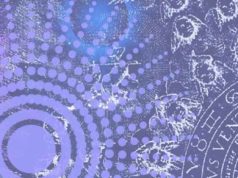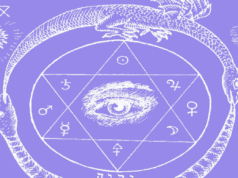There are two methods of using the fixed stars and their constellations for astrological purposes nowadays. 1) The fixed stars longitude method on the ecliptic or 2) The visual astrology of parans. The ecliptic is the path the Sun takes to travel around the earth, and it comprises the 360 degrees of the zodiac. The use of fixed stars in astrology goes back thousands of years, but since many of the important books were probably burnt in the fire of the great library in Alexandria, we may never really know precisely how the fixed stars were used astrologically as opposed to astronomically.
Hipparchus devised the first known catalogue of fixed stars in 129 BC when he projected 850 stars onto the ecliptic. Ptolemy the famed astrologer, astronomer and mathematician from Alexandria expanded this earlier work. At the end of 149 AD, Ptolemy had listed 1022 stars by longitude and latitude. This time Ptolemy took precession into account so this star list could be used by future generations. This was a complete innovation. It was published in his influential astronomical work Almagest. This way of working with the fixed stars caught on in a big way, since it was beautifully simple. It completely wiped out the complex use of parans, which were thought to have been used previously.
Parans V Longitude
Ptolemy’s tables were in use for an incredible 1000 years, but fixed star astrology fell out of favour during the uprise of Christianity. Ptolemys work was rediscovered in the Arab world however. Astronomer Ulugh Beg (1394-1449) produced star maps that were based on the poles of the celestial equator rather than the ecliptic. His positions differ from Ptolemy’s by about 1 degree due to advanced instruments and a better understanding of physics. To get a better understanding of the differences between the two systems there is a great debate here on Skyscript’s forum that explains the history and science of the longitude system of using fixed stars.
Bernadette Brady advocates the use of parans with fixed stars and refers to Anonymous of 379 BC’s “Treatise On Bright Fixed Stars” in which it is stated that only fixed stars close to the ecliptic should be used in the manner of Ptolemy and that the only true way to use those above the ecliptic is by using parans. I suspect this recommendation is due to inaccuracies of measuring fixed stars off the ecliptic almost 2000 years ago. Science has moved on quite abit since then! Brady also says we shouldn’t confuse Ptolemy’s Astronomy (Almagest) with his Astrology (Tetrabiblios). I don’t know if Ptolemy used parans as I can find no reference for it, neither can I find any current book on fixed stars that uses them. Since 1930, fixed star astrologers, Vivian Robson, Elsbeth Ebertin, Eric Morse and the late Diana K Rosenberg all use the longitude method for their interpretations.
 I personally prefer the longtitude method because it is universal in terms of location. For example if I used parans to read an eclipse, I would have to do a chart for every single city on earth! I also prefer the ecliptic method for natals since with parans everyone born on the same day in the same city, gets the same rising and midheaven star. These days generally, in the US at least, birth times are recorded which again makes me think parans would’ve been more useful in times when birth times were not. I would like to share with you how I use the fixed stars in my own practice. It is so easy to get swamped by them, so I have arranged a tiered system. In this way we open up the mythology all the constellations, near and far. You can look up a stars latitude on constellation of words .
I personally prefer the longtitude method because it is universal in terms of location. For example if I used parans to read an eclipse, I would have to do a chart for every single city on earth! I also prefer the ecliptic method for natals since with parans everyone born on the same day in the same city, gets the same rising and midheaven star. These days generally, in the US at least, birth times are recorded which again makes me think parans would’ve been more useful in times when birth times were not. I would like to share with you how I use the fixed stars in my own practice. It is so easy to get swamped by them, so I have arranged a tiered system. In this way we open up the mythology all the constellations, near and far. You can look up a stars latitude on constellation of words .
Constellations & Latitude
NEIGHBOURS: Fixed stars close to the ecliptic are generally those from the constellations of the zodiac. Like the star Regulus for Leo, Aldebaran for Taurus, Antares for Scorpio and so on. We can give these a 2º.30 -3º orb if they are of the 1st or 2nd magnitude because their effects are strong in that their messages speak to us loud and clear. We don’t need translation and we are familiar with their archetypes through the popular use of star sign astrology. Stars on the ecliptic are like they are standing in the same room with you, both on the same level. You can hear each other clearly and are speaking the same solar language. The language is down to earth, personality based and focuses on humanities struggle with its own ego.
FOREIGNERS: Then we have some constellations that sit close by the ecliptic, but who are not so familiar to us like Ophuichius, Orion, Corvus and Canis Minor. We can also feel their effects strongly, they might even speak the same language, but then we have to listen more carefully due to foreign accents! Examples Sirius, Fomalhaut, Capella, Ras Alhague, Rigel, Algorab, Algol. These stars are more complex and we are starting to look at different cultures and ideologies. Just like Neptune, some of these energies can manifest negatively in an un-evolved being, the dangers of addictions and criminal tendencies are strong here especially with Algol and Algorab. These stars I use between 1º 30 -2º orb depending on their magnitude.







Not all Hellenistic Astrologers used the Tropical Zodiac
when they did, 0 Aries wasn’t used as vernal point
there have been vernal points in 8,10,12,and 15 Aries